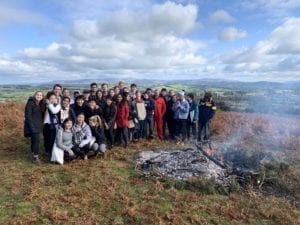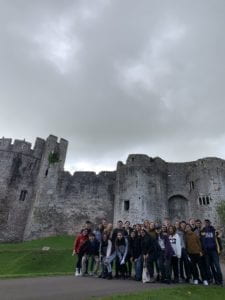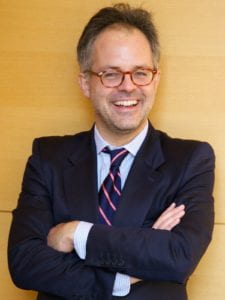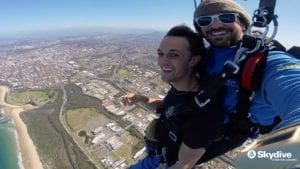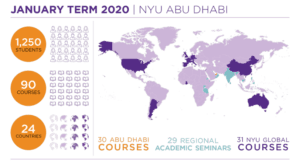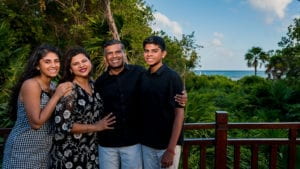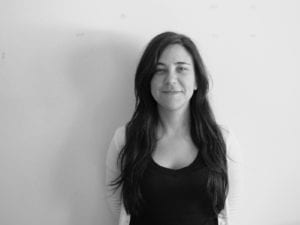 Today we are in conversation with NYU Buenos Aires Professor Cecilia Calero, who teaches “Developmental Psychology” at NYU Buenos Aires.
Today we are in conversation with NYU Buenos Aires Professor Cecilia Calero, who teaches “Developmental Psychology” at NYU Buenos Aires.
- I understand that you are a neuroscientist in the Neuroscience Laboratory of Universidad Torcuato Di Tella. There you lead a research project called “Little Teachers.” Can you tell us a bit about the project?
I work in the neuroscience lab at UnivesidadTurcuato Di Tella. In the lab I now have dual responsibilities. On one hand, I am currently the Vice Director, this means that I am in charge of all the groups in the lab and must take care of all of the administrative work necessary to make sure that everyone can do their own projects. I serve as a liaison between the lab and the rest of university. On the other hand, from an academic point of view, I lead the “Little Teachers” project. This project started during my postdoctoral work with Dr. Mariano Sigman and Dr. Sebastian Lipina, and I continued it as I became an appointed researcher. The focus of the Little Teachers project is trying to understand and explore different aspects of teaching during development. Much of the literature is focused on how we learn and acquire new abilities, concepts, master new materials. Our group is focused instead on how we pass on and transmit information, and the cognitive changes we experience when we pass on what we know. We are evaluating how we assess what we know, and we are exploring whether or not we are intuitively good teachers even without professional training. In the project we work with kids between the ages of three and twelve. They, therefore, have no professional background on how to teach, but have had many teachers in their lives. We examine what behaviours they mimic and which one they don’t and why, as well as what information they present when transmitting information to others.
- How did you come to teach at NYU Buenos Aires and what do you teach?
It was kind of funny story because I ended up teaching at NYU Buenos Aires due to a happy accident. A professor at NYU invited my supervisor to give a talk at NYU Buenos Aires. On the day of the talk, he had a delayed flight and asked me to go instead. So, it was by chance that I ended up giving a talk. While there, I talked about my project and I got to know the NYU Buenos Aires Director, Anna Kazumi Stahl, and Gigliana Melzi. Because I have a neuroscience background, I have a singular perspective on cognitive development, and they like it. I am always connecting everything we observe to the brain; every behaviour is linked to the brain, which operates constantly changing and rearranging the way we process what we experience and physically changing in response to the environment. Both Anna and Gigliana liked this approach to the topic so I started teaching four years ago.
- How has the experience of teaching at NYU Buenos Aires complimented your research work? How has your experience been with the NYU students?
Teaching at NYU Buenos Aires is very different from teaching at my university. First, it is a very small class, which creates a more personal experience for the students. My classes at the university can have 25, 30, 40 students. My class at NYU Buenos Aires is always around ten to twelve students. This intimacy shapes and changes the classes every year, because I always try to include things that the students in each particular class are more interested in. Therefore, I change the materials and papers, and I customize the classes for them each semester. I try to get to know the students and their interests, whether it is public policy, the economic aspects of development, the brain, genetics… It also depends on whether or not the students have already taken classes on development before. Given the fact that the students have very different backgrounds every year, it has been quite a ride. They come from many different disciplines, but also different NYU sites, Shanghai or Abu Dhabi, NY. These differences and the cultural richness it brings, constantly shapes the course. It is also instructive for me.
I am often repeating that we all are a combination of genetics plus environments. That is perhaps the most important concept the I share with my student – we are a combination of what comes with us and what is around us. The diversity in the classroom helps me to illustrate that point. I also always encourage the students to take advantage of being in Argentina. Many may have heard some ideas about Argentina or Latin America, but have never experienced what it means to be in a Latin American country.
During the whole semester we learn about scientific inquiry and how to conduct a real live interview. We explore what you would ask to a hypothetical person to learn different things about that person. We then, during the semester, we have different people coming into the class – researchers, doulas, professionals – to be interviewed.The students learn how to conduct interviews with adults, and towards the end of the semester we also do an interview session with Argentinean teenagers. This entire process requires them to discussed theoretical background matters, choosea topic,develop questions. They consider physical or emotional development, cognitive development, gender, and other issues. They have to come up with an interview and collect data with real subjects. It is especially interesting that the adolescents are usually 15 – 16 years old and the students are a few years older, so they are not that far away from that age. It is therefore a really interesting interview because by the end they realize that they can compare the experiences of the Argentinian teenagers with their own life experiences. There are a lot of differences and similarities, which allows them the understanding of culture from different perspectives.
- I understand that your teaching of developmental psychology and neuroscience at NYU Buenos Aires has provided great opportunities for local fieldwork. Can you share a bit about that?
NYU Buenos Aires is always keen to give students opportunities to interact with researchers and learn how we conduct developmental psychology and neuroscience research in Argentina. I have been in the field for the past 15 years so have a broad network in Argentina. I can usually make appropriate connections depending on student interests. Every year, I bring different researchers to the class, so they have these hands on experiences and know what it means to do science in a Latin American country. I really want my NYU Buenos Aires students to have an experience of what it means to do studies and research and interventions here in Argentina. Reading about interventions in a paper is very different from when you actually have to do it in the field. The way that you connect with the studies is quite different because it becomes much more personal and you cannot always grasp that, when reading a paper. The study comes to life. This year, for example, I brought a researcher from my lab who is a young woman, thereby also providing the gender perspective about how it is for a woman to do science in a Latin American country.
- Is there anything else that you’d like to share about your work or your experiences with NYU Buenos Aires?
I have had a blast with NYU Buenos Aires. You are able to build a real community. Everyone knows your name and everyone knows the students and what they want to study and their hopes and what they want to achieve.
In some sense, that is part of coming to Argentina; we have that personality, we build bonds, we get involved. Overall this has been a really nice experience. Last year, I received a travel grant to visit Global Programs and this year I was in NYU and saw colleagues in the applied psychology department which was great.
Argentina may be a little intimidating at the beginning, but in the end students love that they are part of something. This also makes it easier when you bring people into the class. There is already a sense of openness, and you can ask anything and everything.
I am really glad to be teaching at NYU Buenos Aires.
